
Gelberth Obando and Manuel Alvarado dig four holes in the back lot of the Camaronal National Wildlife Refuge, located in the cantons of Hojancha and Nandayure in Guanacaste. They’re putting in posts to support the roof of a carport. Even though that isn’t in their job description, they’re building the facilities themselves (or at least they’re trying to) because they have no other option.
Isolated in the dry forest, the two park rangers are in charge of the refuge’s 235 hectares (580 acres) of land and 15 nautical miles of ocean. Despite limited personnel, this site has immense biological value since at least three species of endangered sea turtles nest there.
Lack of resources has always been one of their biggest problems. This year, however, the situation has become worse and the conservation area cut the monthly money for gasoline in half: from ¢120 thousand to ¢60 thousand (from about $196 to $98) total. In addition, there are no longer any other travel allowances nor overtime pay.
Even so, it’s almost time to start patrolling the beach. If they don’t protect the turtle eggs, no one else will. They usually go out at night, but today they’re going to have a drill in the afternoon. “Even if they lower a park ranger’s salary, he’ll always give 100%,” said Obando, as he walks into the rainforest.
The COVID-19 crisis exacerbated financial problems in conservation areas in Costa Rica. After aggressive budget cuts, the National System of Conservation Areas (SINAC) is even in danger of a possible “technical closure” in the coming months, according to the Ministry of Environment and Energy’s vice minister of natural resources, Franklin Paniagua.
There have been difficult times in the past, but we’ve never gotten to this point. We can get through this month (August), but it’s going to be hard to have the same flexibility next month (September). The alarms are already going off,” said Paniagua in an interview with Dialogo Chino.
Last year, the Legislative Assembly of Costa Rica approved a budget reduction by more than a third for conservation areas, which was part of an aggressive package of cuts made in several ministries. The cuts are an effort to contain the impact of the COVID-19 crisis on the country’s weak public finances.
During the first half of 2021, the budget was enough to do reduced patrolling and operate with limitations. However, now most conservation areas have run out of money to pay for transportation, maintenance and overtime for their park rangers.
Without sufficient resources, protected areas are unable to fulfill their main purpose, nature conservation, according to Laura Porras, a researcher at the Wildlife Conservation and Management Institute (ICOMVIS- Instituto de Conservación y Manejo de Vida Silvestre) of the National University of Costa Rica (UNA).
This is already a documented fact. In 2009, a UNA study found that when there was a drastic cut in staff at Corcovado National Park in the 1990s, the population of collared peccaries began to decline due to illegal hunting.
To try to get to the end of the year without a crisis, the executive branch convened congress for an extraordinary budget. This would provide some resources to “maintain minimum operation in national parks,” according to the bill. Despite having been presented almost two months ago, the budget has not yet been voted on in the legislative plenary.
While the government in San Jose negotiates the future of this budget, Obando and Alvarado cross a ravine in Camaronal’s dry forest. On the other side, a fisherman goes down a hill at a slightly nervous pace. He greets them and they return the greeting. “We’ve caught him several times with turtle eggs,” Obando murmurs.
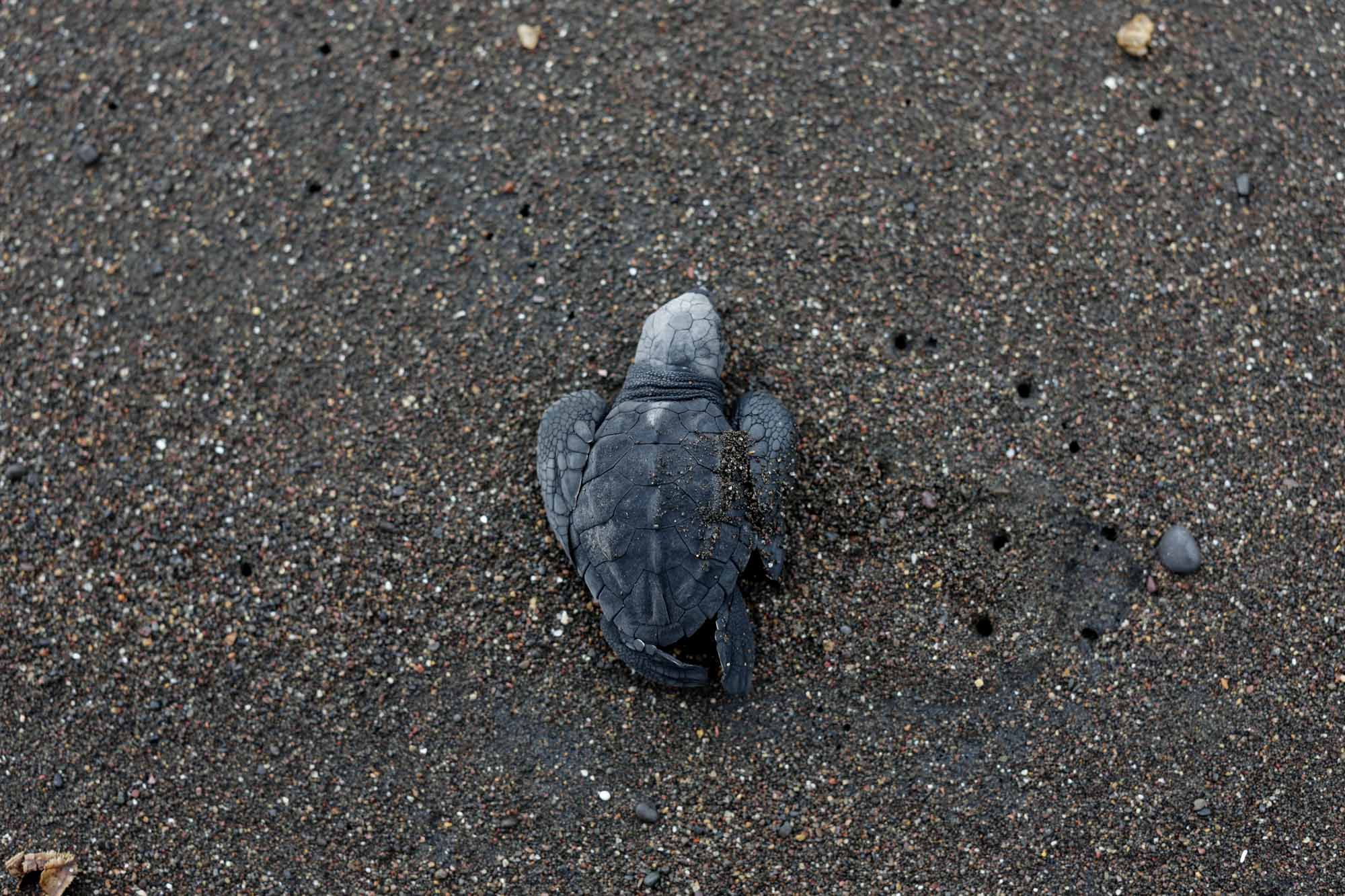
A dead baby Kemp’s ridley sea turtle (Lepidochelys kempii) on the beach in the Camaronal National Wildlife Refuge on August 7. Photo: Maribel Arango
Unprotected areas
The waves begin to sound louder through the trees. The refuge’s beach is a few meters from Obando and Alvarado, but the park rangers prefer to stay hidden. Without the possibility of reinforcements and with a lot of risk involved, they have to surprise turtle nest raiders.
Egg thieves usually come to Camaronal from neighboring communities. There, they hide their motorcycles in the forest and go to the beach to dig up nests, with the goal of extracting them to sell them illegally. “They’ve gotten violent on us,” says Obando, who was recently threatened with a machete while patrolling.
The most common eggs in the refuge are those of the Kemp’s ridley turtle (Lepidochelys kempii), but sometimes there are also black sea turtles (Chelonia mydas agassiui) and leatherbacks (Dermochelys coriacea), all threatened with extinction.
The cuts have made it difficult to care for the eggs, they say. For example, they run out of gas quickly when they take people they arrest to local police stations. The lack of travel allowances also prevents large tracts of land from being covered. “Sometimes you feel like you’re swimming against the current,” says Obando.
But the cuts hit harder because they have a history of lacking resources. For example, the refuge never had the resources to patrol at sea (even though most of the protected area is marine). In fact, they don’t even have their own boat, so they are completely dependent on support from the coast guard, they explain. If the tide rises, the coast guard can’t get in.
Right now, we don’t have the personnel to protect the area. If there were cuts, it would be even worse for conservation,” Obando pointed out.
Far from being an exception, this pair of park rangers’ situation is the norm in the rest of the country’s protected areas, explained Paniagua, head of the Ministry of the Environment. “These items (overtime, transportation, maintenance) are currently in a very limiting condition,” he stated.
The system as a whole is in danger of a “technical closure” in a matter of a few months, explained the vice minister. This means that some sectors would be closed to the public and others could practically only take care of the entrance of tourists, without carrying out research and patrolling.
Talking about neglecting the protected areas of Costa Rica is a big deal since 25% of the country’s territory is under some type of protection. In total, more than 13,000 square kilometers (3.2 million acres or 5,000 square miles) are protected.
That’s a pessimistic scenario, of course. But the situation is already critical in order to handle certain emergencies. “At this moment, fortunately, we’re in the rainy season. But, if we were in this situation during forest fire season, we wouldn’t have the capacity to deal with an emergency situation,” said the vice minister.
In the country’s South Pacific region, the Osa Conservation Area (ACOSA- Área de Conservación Osa), has already experienced difficulties in dealing with environmental complaints, indicated Sandra Marti, a member of that protected area’s regional council.
That is very serious because one of the tasks of the conservation areas is to attend to complaints. That’s why you need to be able to get around and here there are no roads. Vehicles get beaten up and require maintenance, as well as gas for long distances. We simply don’t have a budget for all this,” explained Marti.
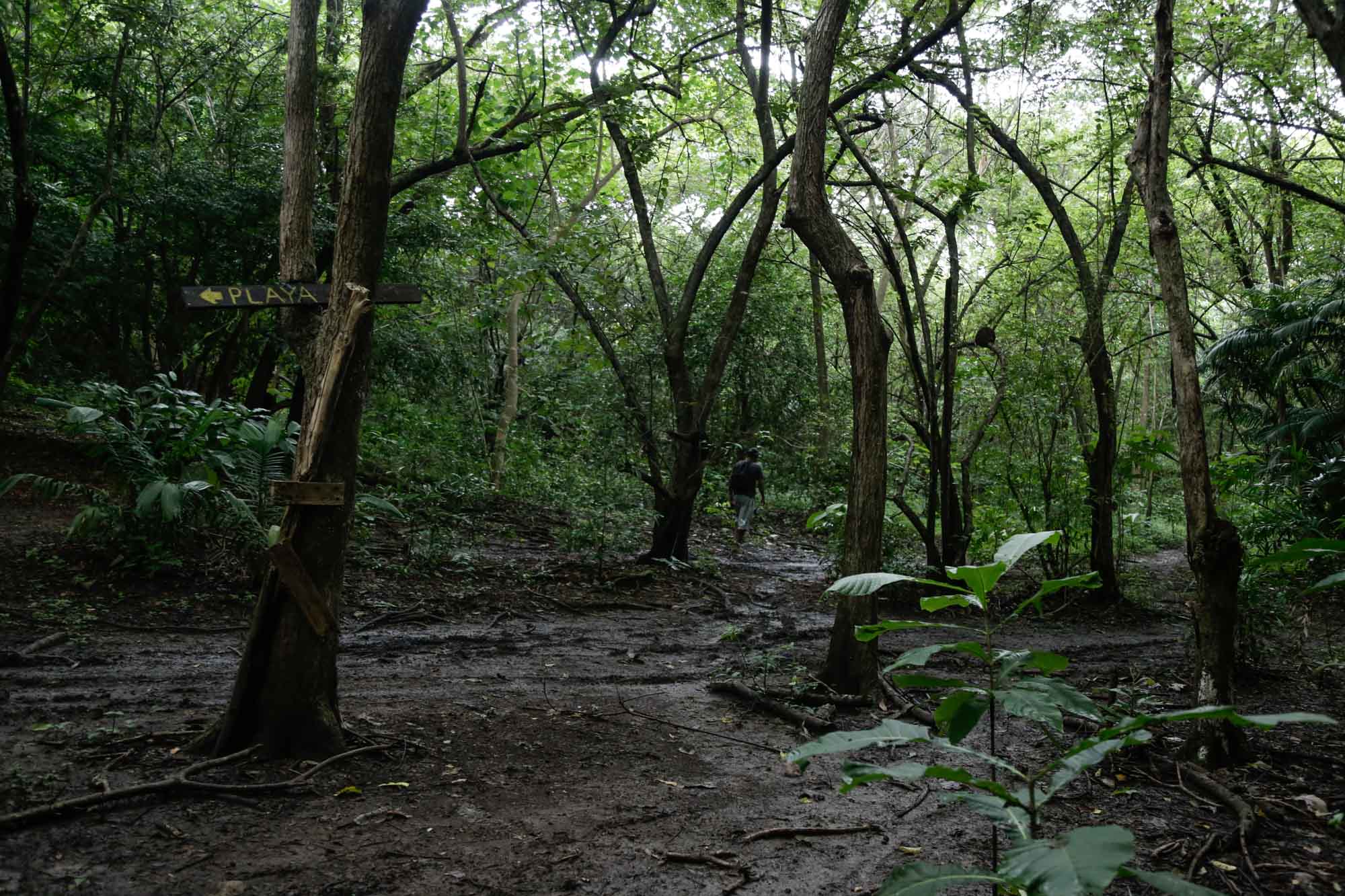
The Camaronal National Wildlife Refuge belongs to the Tempisque Conservation Area (ACT), which includes the entire Nicoya Peninsula and the islands in the Gulf of Nicoya, with the exception of San Lucas Island. Photo: Maribel Arango
Budget Cuts
The COVID-19 pandemic came at an inopportune time for Costa Rica. The country’s finances at the close of 2019 were at the highest fiscal deficit in recent history: 7% of the gross domestic product (GDP). In other words, the emergency threatened to put the country on the brink of an even bigger fiscal crisis.
In fact, due to the high internal debt— the portion of the public debt that’s in the local economy— and the financial imbalance, Costa Rica began to negotiate a loan of $1.7 billion with the International Monetary Fund (IMF), which legislators finally approved on July 19.
With this outlook, during the second half of 2020, the Costa Rica’s Legislative Assembly began to discuss the budget for 2021, amid high uncertainty about what would happen with the virus.
That’s why the assembly put heavy pressure on the executive branch to cut at least 1% of the GDP from the budget, which the government resisted, arguing the need to maintain public services during the emergency.
In the end, the opposing parties (National Liberation, Christian Social Unity and National Restoration) approved a general cut of ¢162 billion (about $265 million) to the national budget. The cut put many institutions against the wall, including the Conservation Area System.
As a comparison, in 2020, after some budget adjustments throughout the year, the Legislative Assembly authorized SINAC to use ¢48.5 billion (about $79.2 million) for their work. On the other hand, the budget approved for 2021 reduced that amount by 38%, leaving about ¢29.8 billion (about $48.7 million).
You have to know two things about SINAC’s finances to understand why this was a tremendous blow to the institution. Basically, the central budget is very important.
The first thing is that what tourists pay for admission to visit the protected areas doesn’t go directly to SINAC, but rather to the central administration and this gives them a budget in return. This guarantees that there is no inequality of resources between protected areas, since more than half of tourists visits tend to focus on only four of the national parks. But it also means that if there is a budget cut, everyone suffers.
The other key factor is that, during the COVID-19 emergency, all taxes that have a specific destination (ordered by law) were routed to the central administration. This was an alternative source of income for SINAC since, for example, the institution receives income from a water use tax and from a general forestry tax. This income disappeared.
To try to keep the institution afloat until the end of the year, the executive branch called for a series of amendments to the budget before Congress. One of them would allow SINAC to use ¢6 billion (about $9.8 million) of the surplus left over from other years for overtime, transportation and maintenance items.
According to the bill, the budget would allow national parks to keep functioning at “minimum operation,” as well as preventing forest fires and paying contracts for forest protection on private properties. The money is about to run out for all of these things.
The new budget hasn’t yet advanced to the legislative plenary, but even if it is approved, the effects of the budget cut will be felt for the next 3-5 years, Paniagua estimated.
Among other things, the cut will delay the expansion of a technology platform to buy park tickets, as well as a significant increase in park rangers. Another particular impact will be the maintenance of infrastructure, he said, since this depends on the national budget.
Conservation At Risk
Obando and Alvarado are nearing the end of their tour of the beach. Some turtle nests were ransacked by raccoons, natural predators in the area, but none by humans. They’ll return to the hatchery without any eggs.
If they had found a nest, they would have moved the eggs to a conservation nursery, made up of several small one-square-meter plots. After two months, at least 70% of the turtles from each nest reach the sea.
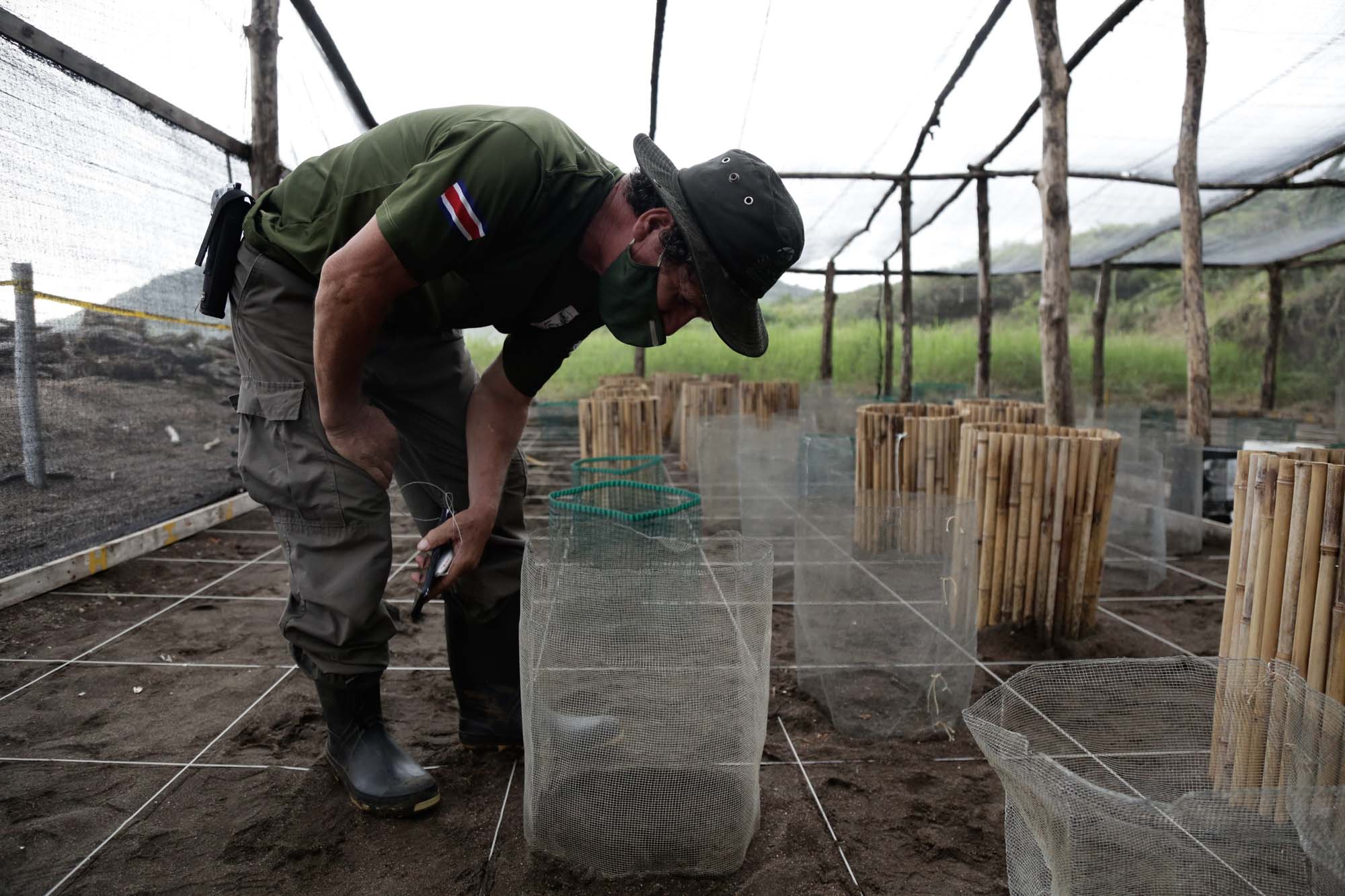
Manuel Alvarado inspects a nest in the sea turtle nursery at the Camaronal National Wildlife Refuge on August 7, where each square meter plot houses a sea turtle nest. Photo: Maribel Arango
This is essential conservation work, but since both of them are overloaded with work, it’s almost always done by volunteers from organizations. When COVID-19 hit and travel restrictions prevented volunteers from coming, the amount of eggs being moved to the hatchery went down, Obando confesses.
The same thing is happening in other protected areas, explained Laura Porras from the National University. Without sufficient resources and personnel, it’s hard for park rangers to complete conservation tasks, the scientist pointed out.
For example, poaching is a reality in many of the country’s protected areas. With insufficient patrolling, poachers enter more freely and plunder the wildlife. In the past, this has already reduced the populations of collared peccaries in Corcovado National Park, in southern Costa Rica, as documented by a UNA study.
This impact is even greater than it seems. When a population falls, it not only affects that species but also its predators, explained Porras. In the case of collared peccaries, their decline also ended up affecting jaguars and pumas.
Scientists need data to identify these types of phenomena, but in 2020, the pandemic interrupted many of these projects. The restrictions caused a 31% decrease in research permits granted, data from SINAC revealed.
In other cases, lack of patrols on trails exclusively for scientists made ongoing research more complicated. “You set up camera traps and, if there’s no patrolling, the cameras start to disappear,” said Porras.
Scientific research is essential for tourism since damage to wildlife ends up impacting local communities, said Sandra Marti from the Osa Conservation Area.
Here practically 99% of the people depend on tourism. If tourists stop being interested in coming, all these people stop earning income. A new blow to tourism after this pandemic would be tragic,” she pointed out.
In Camaronal, there are also some camera traps, although Alvarado and Obando can’t give them much maintenance. Accustomed to swimming against the budget current, the rangers return to the administrative house. They’ll rest for a few hours until they have to go out again at night, when the risk of egg poachers increases.
The house is made up of two bedrooms, a meeting room, a bathroom, a kitchen, couches and a TV. Recently, the regional administration bought radio equipment to keep the stations connected. The device doesn’t work. Neither does the bathroom light.
This article was originally published in Dialogo Chino.


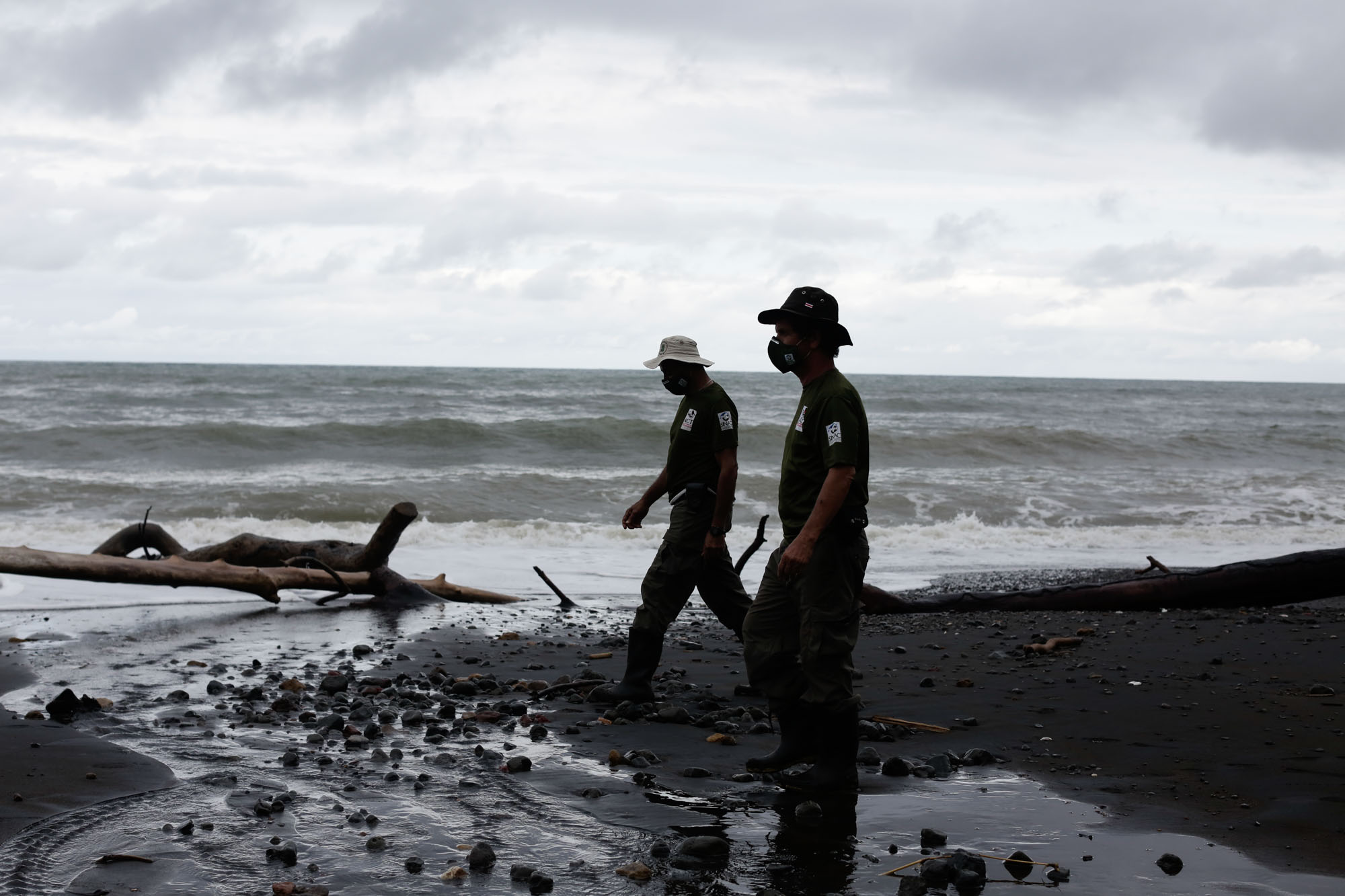
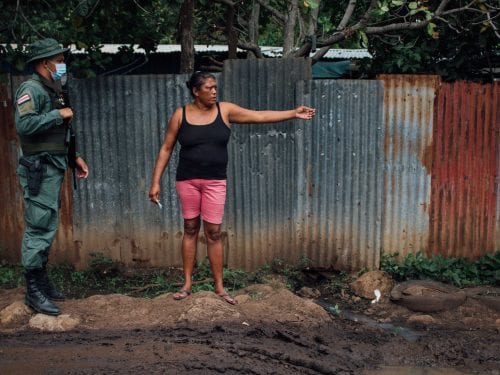
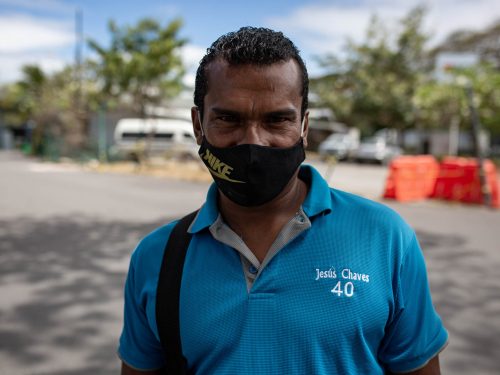
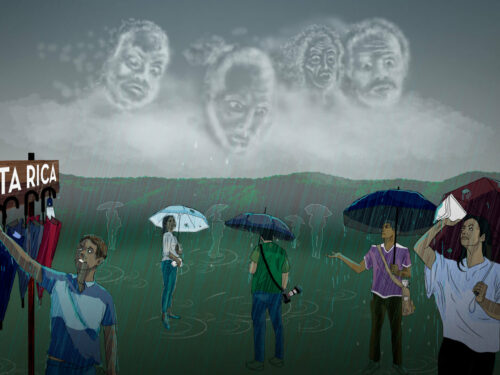

Comments